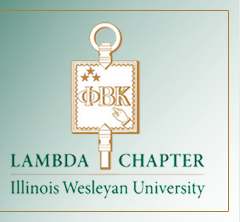Article Title
From the Philippines to The Field Museum: A Study of Ilongot (Bugkalot) Personal Adornment
Graduation Year
2013
Abstract
The Philippine Collection at The Field Museum contains over 10,000 objects, including hundreds of objects of personal adornment. As an intern at The Field Museum in the summer of 2012, I got to experience the collection first-hand and began examining six ornaments from the Ilongot peoples of the Philippines. At the beginning of the 20th century, the Ilongot wore ornaments to visually communicate social meaning about themselves, their villages, and their relationships. The Ilongot were a headhunting society with fearsome warriors who beheaded their enemies. These hunters wore delicately crafted earrings and headdresses to mark their masculinity and skill. Ornaments further marked the strength and importance of alliances and trading agreements and visibly demonstrated their wearers’ social standing, wealth, and cultural power at ceremonies. When collectors carried the objects from the Philippines to The Field Museum, they unavoidably projected their own cultural constructions onto the objects. In this way, the historical context and racial climate of the collecting culture is an important component in understanding the stories these objects have to tell. In addition, the ways museums choose to use and display the objects places further constructions upon them. Museums must practice active engagement both with members of the culture that produced the objects and with museum visitors to display the meaning that objects can communicate.
Recommended Citation
Carlson, Sarah E.
(2014)
"From the Philippines to The Field Museum: A Study of Ilongot (Bugkalot) Personal Adornment,"
CrissCross: Vol. 1:
Iss.
1, Article 1.
Available at:
https://digitalcommons.iwu.edu/crisscross/vol1/iss1/1


Comments
Sarah E. Carlson was awarded a Phi Beta Kappa Liberal Arts Scholar Award for her research. "Interdisciplinary research can be among the most rewarding, illuminating, and productive modes of discovery and learning. My major, anthropology, emphasized its merits particularly strongly. My coursework and my experiences have demonstrated to me that no singular approach to a problem can hope to be definitive, and no single person can have all the right answers. It is through collaboration and integration of many methods of study and points of view that we can begin to tackle complex and inspiring questions. In doing so, we encounter ideas and thought processes we may ever have otherwise considered, providing a creative and productive pathway to the conversations and connections that lead to new knowledge. Since graduating in May I have moved to Augusta, Georgia to work as the Assistant Registrar at The Augusta Museum of History. I help the registrar in the processing, organization and preservation of the museum's artifact and archival collections. My primary project concerns the processing of an estimated 500,000 photo negatives from a local photographer who worked in Augusta from the 1940s-1980s. The photos are not only a visual treasure (wedding photos from the 1980s are amazing) but since the photographer recorded the name and contact information for each of his subjects, it's a fantastic source of local history."